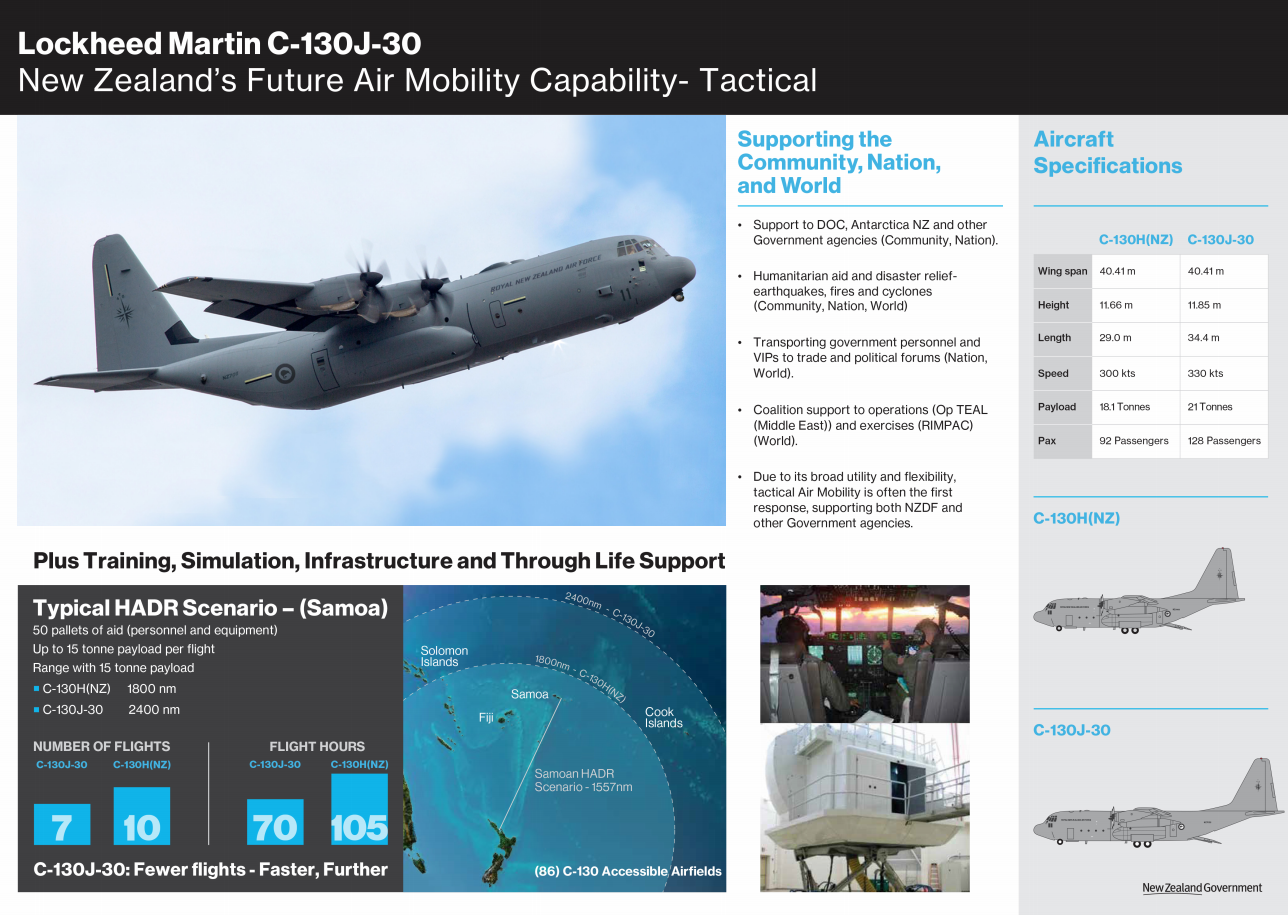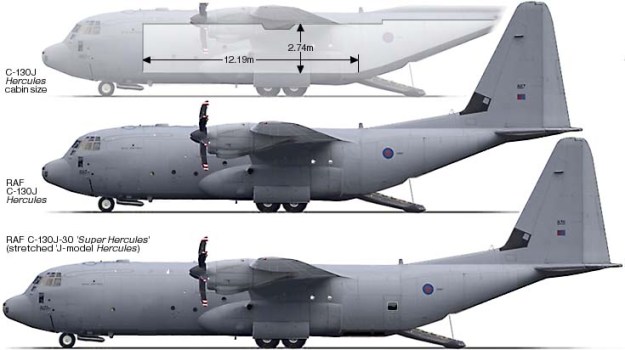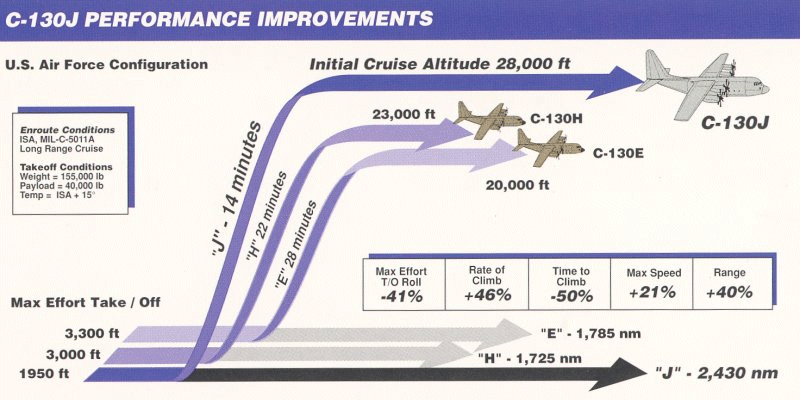The last government finally confirmed the replacement of our aging C-130H Hercules. These airframes will be over 60 years old when they are replaced in 2024. But they are being replaced with C-130J-30 Super Hercules, so what is the difference other than the airframe not being in it's 60's. The NZG ordered 5 C-130J-30 aircraft ordered in June 2020 to replace our existing fleet of C-130Hs. The good thing here is it is one for one and no drop in fleet numbers.
Let's have a closer look;
As we know the C-130 Hercules is an American four-engine turboprop military transport aircraft designed and built originally by Lockheed (now Lockheed Martin). Capable of using unprepared runways for takeoffs and landings, the C-130 was originally designed as a troop, medevac, and cargo transport aircraft.

The aircraft has been around since it's first flight in 1954, and introduction in 1956. The aircraft has proven to be reliable in the theatre and while there has been accidents and mishaps considering the number flown world wide and the number of operations both civil and in theatre they are still a robust aircraft.
So what as the difference between old and new.
C-130H |
C-130J-30 |
|
Length: 97 ft 9 in (29.79 m) |
Length: 112 ft 9 in (34.4 m) |
|
Wingspan: 132 ft 7 in (40.41 m) |
Wingspan: 132 ft 7 in (40.41 m) |
|
Height: 38 ft 3 in (11.66 m) |
Height: 38 ft 10 in (11.84 m) |
|
Capacity: 42,000 lb (19,000 kg) payload |
Capacity: 44,000 lb (19,958 kg) |
|
Max takeoff weight: 155,000 lb (70,307 kg) |
Max takeoff weight: 164,000 lb (74,389 kg) |
|
Maximum speed: 320 kn (370 mph, 590 km/h)
|
Maximum speed: 362 kn (417 mph, 670 km/h)
|
| Max normal payload: 36,500 pounds (16,590 kilograms) | Max normal payload: 36,500 pounds (16,590 kilograms) |
|
Maximum Allowable Payload: 42,000 pounds (19,090 kilograms) |
Maximum Allowable Payload: 44,000 (19,958 kilograms) |
| Range: 1,208 mi at max normal payload | Range: 1,956 mi at max normal payload |
|
Service ceiling: 33,000 ft (10,000 m) empty |
Service ceiling: 28,000 ft (8,500 m) with 42,000 lb (19,051 kg) payload |
|
Crew: Five (two pilots, navigator, flight engineer and loadmaster) |
Crew: Three (two pilots and loadmaster, although apparently RNZAF will have 2 loadmasters) |

While it may look the same to some, the C-130J-30 is a very different aircraft to the C-130H. The most obvious differences are the six bladed composite prop and an increase of 4.5 metres in the cargo compartment length (two additional pallet stations), but looking further there are a lot of other changes and new technology that makes this a very different aircraft.
ENGINES
New generation AE2100D engines that offer greater power and overall performance with reduced fuel consumption. Controlled via a Full Authority Digital Engine Control system. 24% more power on take-off, 19% more thrust at cruise and 15% lower fuel consumption.
MATERIALS
While not a composite aircraft, the C-130J-30 utilises composite materials in areas where beneficial to do so – the propellers and some flight controls.
INTEGRATION
All systems and equipment is interconnected, even to the extent of having electronic circuit breakers.
DOMESTIC TECHNOLOGY
The C-130J-30 comes with a toilet (no longer a bucket) and a microwave oven in the galley.

HEAD UP DISPLAY
Each pilot has a full digital Head Up Display (HUD) that displays all key information while allowing the pilots to keep their heads up and looking outside the aircraft. The full cockpit, including the HUD is night vision imaging system compatible.
REGULATORY COMPLIANCE
The block 8.1 variant of the C-130J-30 comes fully compliant with all modern airspace regulatory regulations and modern navigation and communication standards.
ELECTROOPTICS / INFRARED
The new generation Wescam MX-20, high definition, digital system with Thermal Image, Colour Continuous Zoom, Daylight Spotter, Short Wave Infrared Spotter and Laser.
RANGEFINDER
Can be displayed and controlled at both the co-pilot station and at the augmented station.
WIDE BAND CIVILIAN SATCOM
Using the Honeywell Jetwave system via the INMARSAT system, to achieve high speed data transfer. Combined with wifi distribution, this will allow information dissemination to the passengers and will also permit transmission of video and data to ground units.
ENHANCED CARGO HANDLING SYSTEM
Provides for improved airdrop accuracy, loading and loadmaster safety. Electrically actuated locks and restraints, underfloor winch, loadmaster console (integrated into aircraft systems) and flip-to-stow roller conveyors.
MILITARY SYSTEMS
Full communication suite, military grade navigation systems, armour, role equipment, Link-16, enhanced self-protection system and Large Aircraft Infrared Counter Measures to support military roles and tasks.
EXPLOSION SUPPRESSANT FOAM
Fitted in all tanks (including aux tanks) to reduce risk of fuel tanks exploding if aircraft encounters small arms fire when operating in high threat environments.
SIMULATOR
A full motion, Level D simulator that will also serve as the procedural trainer and maintenance trainer. Totally electrically actuated and has positions for the two pilots, loadmaster, augmented crew station and up to three instructors.
ENHANCED LIFE CENTRE WING SECTION
A strengthened and improved design allows the aircraft to be operated and flown for 75,000 hrs before any work is required on the centre wing section. Improved structure and systems to allow ramp operations up to 250 knots.





